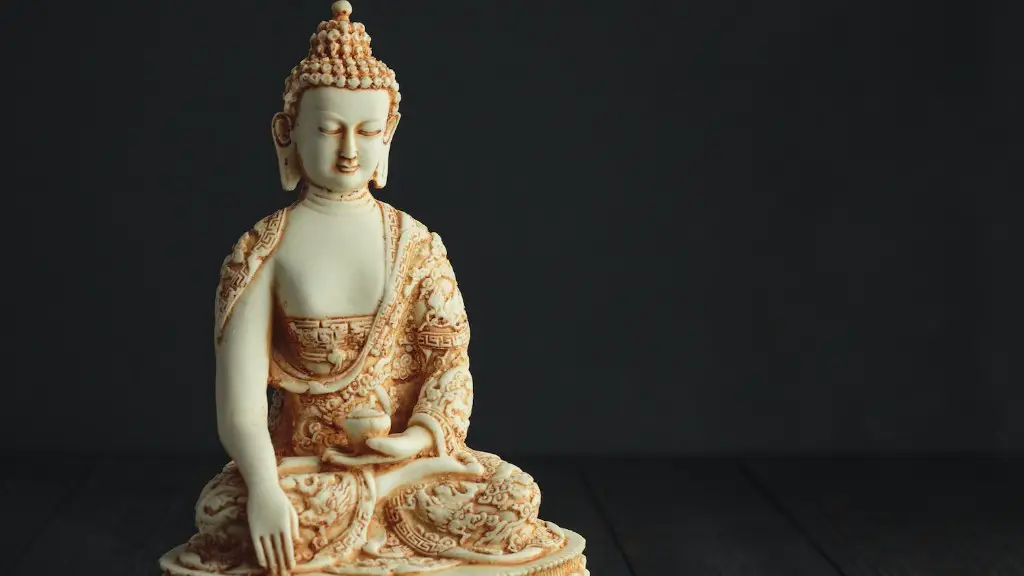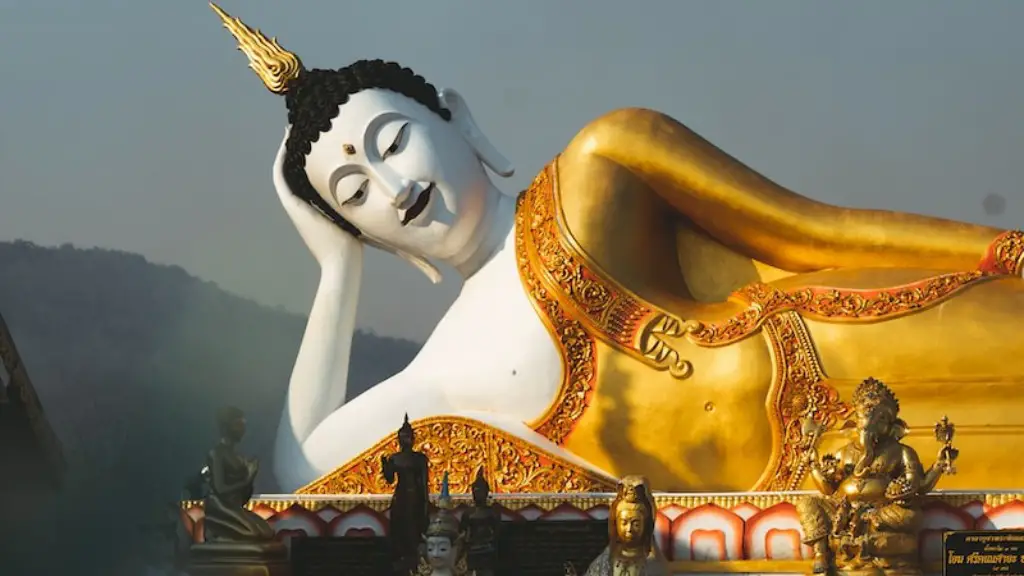Hinduism is one of the world’s oldest religious traditions, with a vast array of beliefs and practices that span thousands of years. It is also one of the most influential and widespread religions in the world, with more than 1.3 billion adherents worldwide. The Hindu faith has a complex system of guidelines and beliefs, many of which are related to living a moral, ethical and meaningful life. Here we’ll explore some of the rules and regulations of Hinduism, and how they shape the lives of adherents.
One of the core principles of Hinduism is Dharma, which is often translated as “duty” or “righteous living.” This encompasses living a moral and ethical life that is supported by challenging one’s self to continue growing spiritually. Dharma has many components that can range from observing rituals to leading an honest lifestyle to following a certain caste system. Despite its flexibility, Hinduism also provides unwavering standards that must be adhered to, such as the avoidance of killing, stealing, and lying.
The ethical and moral guidelines in Hinduism are a large part of the tradition. As the Hindu faith is so vast and varied, the moral rules will differ depending on an individual’s faith and circumstances. Generally, adherents of Hinduism must adhere to any written or verbal vows they make, stay clear of intoxicants, and follow their family’s religious tradition. Additionally, Brahmacarya (celibacy) is highly respected and often required for those who have taken on higher spiritual practices. All Hindus must also observe ahimsa (non-violence towards all living things in thought, word, and deed).
Another important rule to Hinduism is the caste system, which encourages people to stay within the same social standing of the Hindu faith. Caste is the stratification of Indian society, and is sustained by traditional custom and religious contexts. Each individual is placed into a cast according to their job, social roles, and lifestyle. This ensures that the social structure of Hinduism will remain intact and is considered a way of upholding the order established by the divine.
Hindus are also obligated to give puja (offerings and prayers) to their divine figures and observe certain fasts and rituals. Hindus often fast during certain times of the year and this is often connected with the lunar calendar and festivals such as Diwali. Puja or devotion to the divine can take the form of personal prayer or group prayers in temples, as well as other holy sites. Additionally, Hindus observe ritual cleanliness such as taking ritual baths, washing hands and feet before prayer, and avoiding certain foods.
The rules of Hinduism also extend to the social realm. In general, Hinduism discourages association with members of other religions, particularly if they are involved in practices that are not in keeping with Hindu values. Additionally, intermarriage outside of one’s caste and religion is considered unacceptable, and divorce is highly frowned upon. Finally, rituals such as Sati (a widow immolating herself on her husband’s funeral pyre) have been outlawed.
Cultural Rituals and Practices
Hinduism is filled with a plethora of rituals and practices that are aimed towards connecting with the divine, or expressing thanks and praise. Many of these rituals and practices will vary between regions and communities, but they all share the common purpose of deepening one’s spiritual understanding. Common examples include kirtan (devotional singing accompanied by instruments), homa (fire ceremony), yajna (a type of mantra chanting), puja (dedication of offerings to the divine), and havan (sacrificing a sacred fire). Additionally, Hindus may observe specific festivals at certain times such as Diwali, Holi, and the Navratri.
Hindus also observe pradakshina (circumambulation), which involves walking around a deity or temple in a clockwise manner. This is a symbolic gesture representing respect, devotion and honor. Hindus also practice puja-archana which is when they offer flowers, incense and food items to the divine being. This is an essential part of Hindu worship that is often displayed at festivals and ceremonies.
At home, Hindus also practice puja which includes chanting mantras and offerings. This ritual also includes lighting lamps or diyas, which symbolize the light of knowledge, wisdom and peace. This practice is usually followed by reading scriptures, meditating and singing worshipful songs. Additionally, Hindus may practice hatha and kundalini yoga as part of their spiritual practice.
Living a Spiritual Life
Hindus are encouraged to live a life filled with moments of spiritual transformation. This can be achieved through practicing seva (selfless service), bhakti (devotion), and samadhi (enlightenment). Bhakti is a spiritual practice focused on love for the divine and developing a relationship with god. This includes repeating the name of god and offering prayers and support. Seva, or selfless service, is the practice of service without expecting anything in return. This can range from helping family and friends, to donating money or volunteering at an organization.
Hindus are required to give back to their communities in some way, which can range from taking part in community service to practicing satyagraha (non-violent civil disobedience). Additionally, many Hindus believe that penance or austerities should be completed in order to cleanse the effects of negative behavior and transform one’s consciousness. This can include fasting, controlling emotions, giving up possessions, and taking on physical labor such as walking barefoot.
Overall, Hinduism is a complex yet rewarding spiritual path that offers a variety of ways for adherents to develop an understanding of divine truths and grow closer to the divine. By following the guidelines according to one’s individual circumstances and beliefs, a deep and fulfilling spiritual journey is achievable.
Ramayana and Bhagavad Gita
The most significant scriptures of Hinduism include the Ramayana, Mahabharata, and the Bhagavad Gita. The Ramayana is an epic poem detailing the story of Rama and the rule of Dharma on earth. The Mahabharata is an enormous narrative that follows Arjuna, the main protagonist and his quest to master Dharma. Finally, the Bhagavad Gita is a philosophical poem composed by Lord Krishna and provides instructions on the nectar of life and the attainment of the Supreme Reality.
The Ramayana is popularly used as a source of inspiration, morality and inspiration for Hindus. The poem serves as a moral guide, demonstrating how to live a life that is virtuous. Additionally, it underscores the importance of faithfulness, loyalty, respect and courage. The Mahabharata serves as a religious and philosophical guide, teaching how to live a life that is filled with spiritual knowledge and wisdom. Whereas the Bhagavad Gita is an important religious text that outlines how to become a Karma Yogi, or one who sees the divine in all and thus acts in a righteous fashion.
These scriptures provide clear guidance on the values and beliefs of Hinduism, serving as an important source of teaching, inspiration, and moral education for Hindus. These scriptures serve as a moral compass for Hindus, providing them with tips on how to lead a meaningful life. Additionally, some Hindus believe that these scriptures contain secret truths from the divine, which can only be revealed through meditation and contemplation.
Hinduism and Spirituality
Hinduism offers numerous spiritual experiences to its adherents who seek to grow spiritually. Hindus seek to build a close connection to the divine through various spiritual practices, such as meditation and contemplation. Additionally, some Hindus may practice the Upanishads and Vedas, which are sacred texts filled with spiritual knowledge. These scriptures can provide guidance on the proper path to achieving spiritual freedom and infinite knowledge.
Additionally, some Hindus will practice bhakti yoga as a way to achieve a closer connection to god. Bhakti yoga is a spiritual practice focused on love for the divine and developing a relationship with god. This includes repeating the name of god, offering prayers and support, and performing acts of selfless devotion. Hindus also practice japa (repeating mantras) and satsang (gathering with like-minded individuals and discussing spiritual matters). These practices are beneficial for connecting with the divine, deepening spiritual understanding and helping to foster inner peace and contentment.
Hindus also practice meditation and contemplation as a way to quiet the mind and allow for inner listening. This practice is seen as a way to access divine wisdom and grow closer to the divine. Hindus may also practice pranayama (breathing exercises) and chanting to achieve a higher state of consciousness. These practices are often combined with yoga asana (positions) to help practitioners hone their spiritual practice.
Conclusion
Hinduism is a vast and ancient religion that has been practiced for centuries. It is filled with a plethora of rules and regulations that provide practitioners with guides for leading a meaningful and fulfilling life. From the spiritual practices and rituals to the moral and social guidelines, Hindus must adhere to rules that allow them to grow closer to the divine and offer a sense of order in the universe. A life lived in observance of Hindu beliefs is filled with moments of spiritual transformation, inner peace and contentment.


